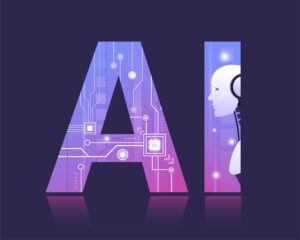
As a technology professional interested in artificial intelligence, you likely know Google as a pioneer in this field. With innovations like TensorFlow and large-scale AI models, Google has pushed the boundaries of what machines can do. In this article, you will get an overview of key Google AI projects and products. We will explore how technologies like RankBrain and BERT are used across Google services. You will learn about applied AI efforts in areas like healthcare, transportation, and more. This summary provides both technical and non-technical readers with a broad look at how Google AI is shaping the world. Now let’s dive in and see what’s next for this tech giant.
Introduction to Google AI
Google AI encompasses all of Google’s efforts to progress artificial intelligence capabilities, including machine learning and deep learning. Three of Google’s most well-known AI projects are ranked amongst the most advanced AI technologies today.
TensorFlow
TensorFlow is Google’s end-to-end open-source platform for machine learning. It has tools for building and training ML models, and it supports convolutional neural networks, recurrent neural networks, and more. TensorFlow powers many Google products, like Google Photos, Google Cloud, and Google Assistant. Outside of Google, TensorFlow is used by companies like Twitter, PayPal, and many startups.
Google Assistant
Google Assistant is Google’s virtual assistant that uses natural language processing and machine learning to understand complex sentences and requests. It can perform various tasks like setting reminders, playing music, answering general knowledge questions, and controlling smart home devices. Google Assistant is available on over 1 billion devices, including Android and iOS phones, smart speakers like Google Home, and some third-party devices.
DeepMind
DeepMind is Google’s AI company focused on developing general artificial intelligence. DeepMind created AlphaGo, software that learned how to master the game Go without being explicitly programmed. DeepMind’s research has led to advancements in areas like game theory, neuroscience, and protein folding. DeepMind’s goal is to create AI that can solve complex problems, adapt to new situations, and generalize its knowledge.
Google AI has transformed how we interact with technology and will continue shaping the future with ongoing improvements in machine learning and artificial general intelligence. Overall, Google AI represents the company’s progress in developing innovative AI solutions for practical use.
Key Google AI Technologies: Deep Learning, NLP, Computer Vision

Deep Learning
Deep learning is a machine learning technique that teaches computers to learn on their own by using large amounts of data. Google uses deep learning in many of its products and services. For example, Google Translate uses deep learning to translate between languages, and Google Photos uses deep learning to organize your photos.
Natural Language Processing (NLP)
NLP is a branch of artificial intelligence that helps computers understand, interpret, and generate human language. Google uses NLP for various applications like Google Assistant, Google Translate, and Smart Compose in Gmail. Google’s NLP models are trained on massive datasets to understand linguistic nuances and the context behind language.
Computer Vision
Computer vision is a field of artificial intelligence that trains computers to identify and process images and videos in the same way that humans do. Google uses computer vision for various applications like Google Photos, Google Lens, and self-driving cars. Google’s computer vision models are trained on huge datasets of images and videos to develop an understanding of the visual world.
In summary, Google relies on state-of-the-art AI technologies like deep learning, NLP, and computer vision to power many of its products and services. By leveraging massive amounts of data and computational resources, Google continues to push the boundaries of what is possible with artificial intelligence. With AI at the core of its business, Google is shaping the future and helping us gain a deeper understanding of the world.
Google AI Applications: Search, Assistant, Translate, Photos
Google has been at the forefront of artificial intelligence (AI) and machine learning technologies for decades. They have created and deployed a number of AI applications that improve their services and enhance user experiences.
Search
Google’s search engine utilizes AI to better understand user queries and determine the most relevant results. RankBrain is an AI system that helps Google understand the meaning and intent behind ambiguous or complex search queries. It allows Google to return results that are tailored to what the user is looking for. Google also uses AI to filter out low-quality, unhelpful, and inappropriate content from search results.
Assistant
The Google Assistant is an AI-powered virtual assistant available on mobile devices and smart speakers. It can understand conversational requests, take actions on your behalf, and provide helpful information when you need it. The Assistant gets smarter over time by learning your preferences, the questions you ask, and the commands you give. It uses advanced AI technologies like natural language processing, machine learning, and neural networks to understand your requests and determine appropriate responses.
Translate
Google Translate uses neural machine translation, an AI technique, to provide translations between over 100 languages. It goes beyond just matching words and phrases by considering the context and meaning of the text. This allows Google Translate to provide more fluent and accurate translations than traditional statistical machine translation methods. The AI models behind Google Translate are constantly learning and improving as they are exposed to more data.
Photos
Google Photos uses AI and machine learning to automatically organize your photos, recognize people, places, and things, and make your photo library more useful and accessible. AI powers feature like Memories, which resurfaces old photos you may have forgotten about, and the ability to search your photo library by the people, places, or things that appear in the photos. The AI models in Google Photos are personalized to your photo library and continue to improve over time.
The Future of Google AI: Where It’s Headed Next
As Google AI continues to progress, its applications and capabilities are expanding rapidly. Google is investing heavily in AI research and development to push the boundaries of what is possible. Several areas show promise for further advancement.
Improved Machine Learning Techniques
Google is developing new machine learning methods that can leverage enormous datasets to teach AI systems complex concepts and skills. Techniques like deep learning, reinforcement learning, and transfer learning hold promise for creating AI that can understand language, reason about the world, and even master complex games and simulations. Google’s DeepMind AI recently used deep reinforcement learning to master the game of Go, defeating a world champion.
Advanced Robotics
Google’s robotics program aims to build intelligent machines that can manipulate the physical world. Google’s robots use machine learning and sensing to navigate, grasp, and manipulate objects with a high degree of dexterity and precision. Google’s roboticists are working to create robots that can perform useful tasks like sorting recycling or assisting in warehouses and factories. Advanced robotics could transform many industries and jobs.
Generative AI
Generative AI uses machine learning to generate novel examples, like images, videos, speech, and text, that resemble authentic data. Google has developed systems that can generate photorealistic images, videos, speech, and coherent paragraphs of text. Generative AI could be used to enhance creativity or produce synthetic data for training machine learning models. However, it also raises concerns about manipulating media or generating synthetic data to mislead.
Overall, Google AI shows significant promise to continue advancing in capability and finding applications that could improve lives and society. However, responsible development and governance of advanced AI will be necessary to address risks and challenges. With prudent management and oversight, Google AI can achieve its goal of organizing the world’s information and making it universally accessible and useful.
FAQs on Google’s AI Overview
What is artificial intelligence?
Artificial intelligence or AI is the broad concept of machines being able to carry out tasks in a smart, and intelligent manner. AI makes it possible for machines to learn from experience, adjust to new inputs, and perform human-like tasks like recognizing speech, translating languages, driving a vehicle, etc. AI has the potential to greatly impact and improve our lives in the coming years.
What types of AI does Google use?
Google utilizes several types of AI in its products and services:
- Machine learning: Google uses machine learning algorithms that can learn from huge amounts of data. For example, Google Translate uses neural machine translation to translate between over 100 languages.
- Deep learning: Google employs deep neural networks that analyze data in layers to learn complex patterns. For instance, Google Lens uses deep learning to understand images and provide information about objects it detects.
- Computer vision: Google leverages computer vision to analyze and understand images. Products like Google Photos use computer vision to group similar faces and create animations. Waymo, Google’s self-driving car project, relies on computer vision to detect traffic lights, read signs, etc.
- Natural language processing: Google uses NLP to analyze, understand, and generate human language. The Google Assistant taps into NLP to understand voice commands and respond appropriately. Gmail uses NLP to filter spam and categorize emails.
How does Google use AI in its products?
Google integrates AI into many of its popular products and services:
- Google Search uses AI and machine learning to understand the meaning and context of search queries and provide the most useful results.
- Google Maps utilizes AI for traffic prediction, optimizing routes, and estimating arrival times. Google’s visual positioning system uses AI to provide precise location tracking.
- Gmail employs AI to categorize emails, detect spam and phishing messages, and suggest smart replies.
- Google Photos uses AI to group similar faces, create stylized animations from your photos and videos, and suggest photo themes to relive memories.
- The Google Assistant, Google’s virtual assistant, relies on AI to understand voice commands, carry out tasks, and engage in natural conversations.
- Google Lens uses computer vision and AI to analyze images from your camera and provide information about objects, landmarks, contact info, reviews, etc.
- Google Cloud offers AI tools and services to help businesses and developers integrate AI into their applications and workflows.
In summary, AI has become crucial to how Google builds products, understands information, and interacts with users. AI helps power many of the innovative features in Google’s products that we use every day.
Conclusion
As we have seen, Google AI encompasses a diverse range of technologies that continue to push the boundaries of what machines can do. From computer vision to natural language processing, Google researchers are pioneering new techniques that were once thought impossible. While concerns around AI ethics and potential downsides persist, the demonstrated abilities of systems like AlphaGo and BERT show immense promise. Ultimately, Google’s leadership in AI looks set to continue, and the applications of its research could bring transformative change across industries. Though the future remains uncertain, few would doubt Google’s role in shaping it through its advances in artificial intelligence.

